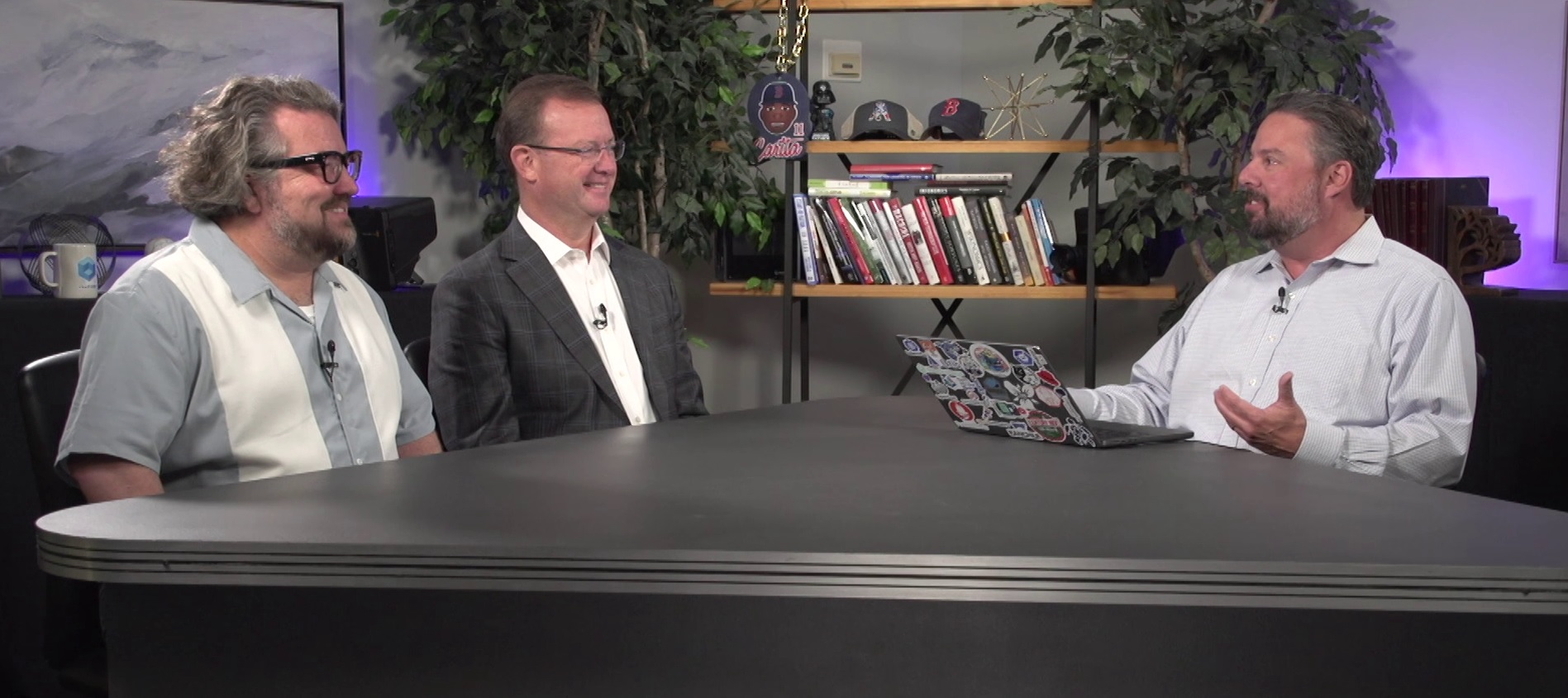 BIG DATA
BIG DATA
 BIG DATA
BIG DATA
 BIG DATA
BIG DATA
In today’s technology landscape, it’s clear that both observability and data platforms are required to satisfy an organization’s needs at scale. That’s made especially true in a cloud-native world, where there are often 20 or more microservices per application, and where data-heavy, generative AI applications are built daily.
Such needs were in mind on the launch day of ChaosSearch Inc.’s Chaos LakeDB, which the company bills as the first data lake database for live search, SQL, and generative AI analytics. Chaos LakeDB has been the foundation of the company’s SaaS-based service for years, according to Ed Walsh (pictured, middle), chief executive officer of ChaosSearch.
“We’re announcing it’s also available, Chaos LakeDB, as an embedded database for service providers,” Walsh said. “You take your standard cloud storage, we transform it into a hot analytic database. And now — we didn’t say we put a database on top, or ETL out of S3 — what we do is we make it actually a hot analytic database, and then we provide rich analytics.”
Walsh and Thomas Hazel (left), founder, chief technology officer, and chief scientist of ChaosSearch, spoke with theCUBE industry analyst Rob Strechay (right) during the “Unlock the Full Potential of Your Data in the AI-Driven Era” event, during an exclusive broadcast on theCUBE, SiliconANGLE Media’s livestreaming studio. They discussed the fusion of lake and database capabilities and the potential benefits for companies that adopt the service. (* Disclosure below.)
When it comes to providing rich analytics, ChaosSearch has sought to provide a fusion of lake and database capabilities. That eliminates the need for complex extract, transform, load and extract, load and transform processes and offers live analytics while ensuring enhanced cost efficiency and performance at scale, the company noted.
“You simply stream your data into any of your object storage around the world. And it’s available immediately for hot analytics,” Walsh said. “The key use case we do, because we deal with the messy data — like machine-generated data coming in — we deal really well with the operational use cases and business use cases.”
When it comes to a business use case, data is a digital footprint of everything going to an application that is very important to a business, Walsh noted. The company says its solution can result in savings of 50 to 80% while freeing up technical resources and simplifying architecture.
“[It] frees up their time from managing all these complex pipelines, managing these different clusters, unifying these use cases. But they also save costs,” Walsh said.
There have been many database and lake house announcements in recent months. But for ChaosSearch, things have been a long time coming, according to Hazel.
“In 2016, the idea of transforming your object storage into a high-performance, at-scale, real-time database seemed a little strange,” he said. “Now, it makes a lot of sense. But the idea was, that’s where all the data was going to, because they’re worried about their pipelines failing, their databases failing, so they’re streaming into services like S3.”
The thought from there was, what if one could transform that data where it lives into a search, a SQL at-scale database? That of course, involves billions and trillions of events, Hazel noted.
“We’re talking about terabytes to petabytes, but do it in a way that is cost-effective and simple,” he said. “We’re a database with a lake philosophy. That’s the big change. That’s the big difference.”
Many times when one thinks about data pipelines, it involves extract, transform and load and schema definitions. That’s not the case here, Hazel noted.
“Stream it into your lake of choice. We auto-discover the schema, we index it without you having to worry about it,” Hazel said. “But we publish well-known APIs.”
There’s also the use of generative AI, which enables conversations with one’s data — making this a “one-two-three” punch, in Hazel’s view. From there, it becomes part of a strategy for an organization and can be embedded underneath.
“If you think of why these service providers or platform providers are looking for this technology, it’s pretty simple. You get architectural simplicity, but also they’re innovating on the application layer or the model layer, especially with GenAI,” Walsh said. “We see a lot of model innovation, and we’re innovating on the data layer. A lot of people are integrating what they could do on the data layer. They’re not innovating on it. So we’re a natural fit for them.”
Here’s the complete video interview with Thomas Hazel and Ed Walsh, part of SiliconANGLE’s and theCUBE’s coverage of the “Unlock the Full Potential of Your Data in the AI-Driven Era” event:
(* Disclosure: ChaosSearch Inc. sponsored this segment of theCUBE. Neither ChaosSearch nor other sponsors have editorial control over content on theCUBE or SiliconANGLE.)
THANK YOU